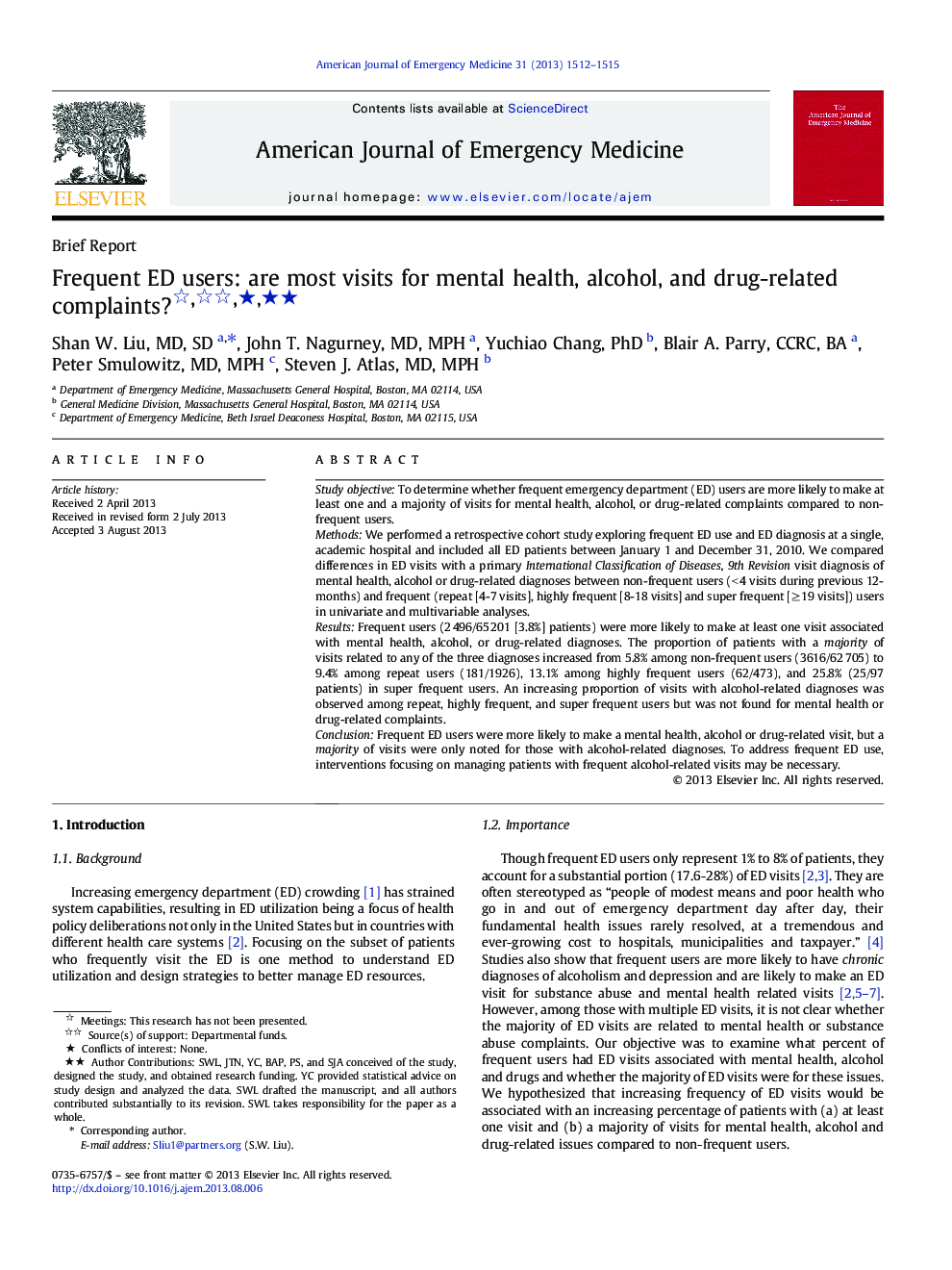| کد مقاله | کد نشریه | سال انتشار | مقاله انگلیسی | نسخه تمام متن |
|---|---|---|---|---|
| 3224459 | 1588125 | 2013 | 4 صفحه PDF | دانلود رایگان |

Study objectiveTo determine whether frequent emergency department (ED) users are more likely to make at least one and a majority of visits for mental health, alcohol, or drug-related complaints compared to non-frequent users.MethodsWe performed a retrospective cohort study exploring frequent ED use and ED diagnosis at a single, academic hospital and included all ED patients between January 1 and December 31, 2010. We compared differences in ED visits with a primary International Classification of Diseases, 9th Revision visit diagnosis of mental health, alcohol or drug-related diagnoses between non-frequent users (< 4 visits during previous 12-months) and frequent (repeat [4-7 visits], highly frequent [8-18 visits] and super frequent [≥ 19 visits]) users in univariate and multivariable analyses.ResultsFrequent users (2 496/65 201 [3.8%] patients) were more likely to make at least one visit associated with mental health, alcohol, or drug-related diagnoses. The proportion of patients with a majority of visits related to any of the three diagnoses increased from 5.8% among non-frequent users (3616/62 705) to 9.4% among repeat users (181/1926), 13.1% among highly frequent users (62/473), and 25.8% (25/97 patients) in super frequent users. An increasing proportion of visits with alcohol-related diagnoses was observed among repeat, highly frequent, and super frequent users but was not found for mental health or drug-related complaints.ConclusionFrequent ED users were more likely to make a mental health, alcohol or drug-related visit, but a majority of visits were only noted for those with alcohol-related diagnoses. To address frequent ED use, interventions focusing on managing patients with frequent alcohol-related visits may be necessary.
Journal: The American Journal of Emergency Medicine - Volume 31, Issue 10, October 2013, Pages 1512–1515